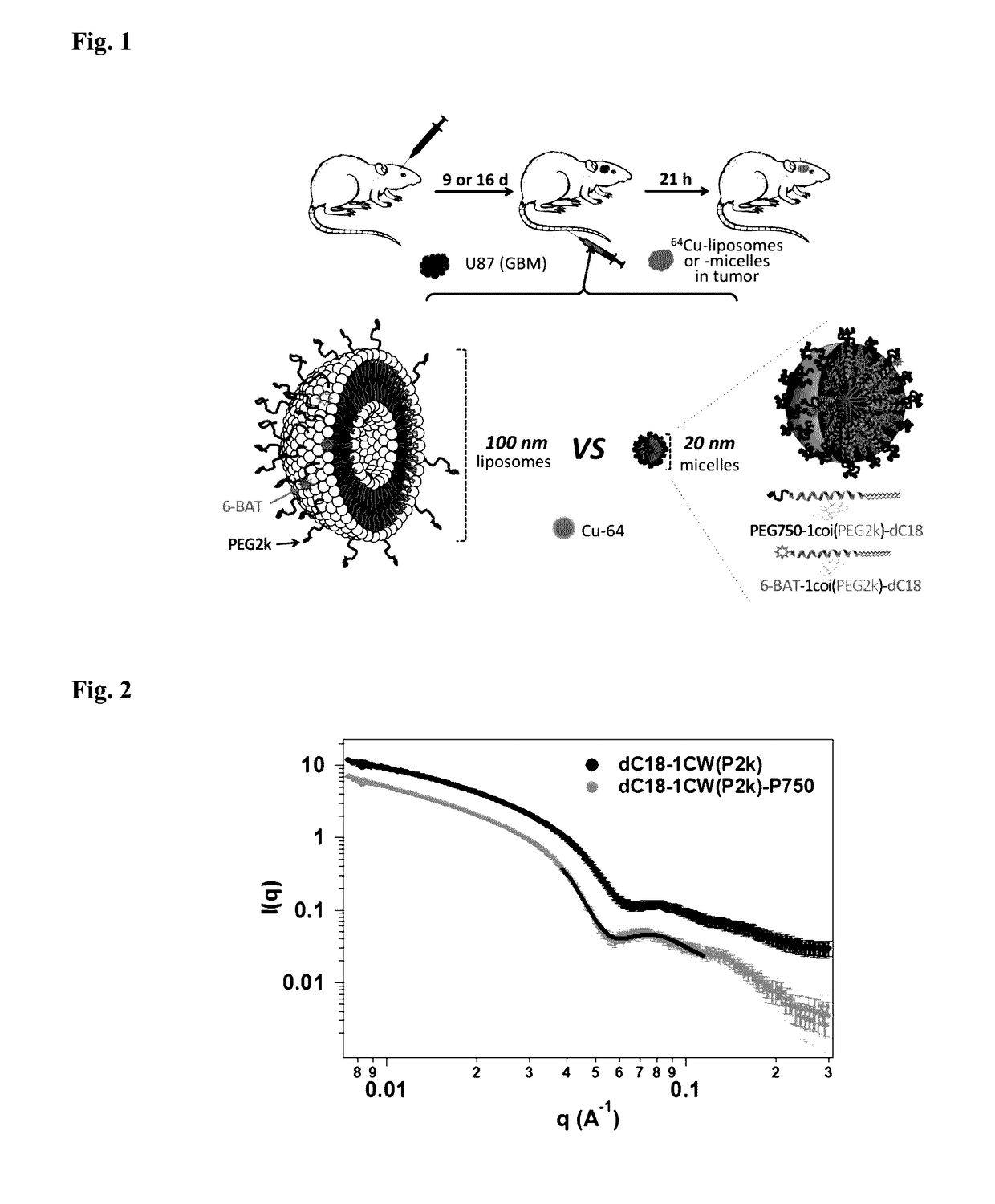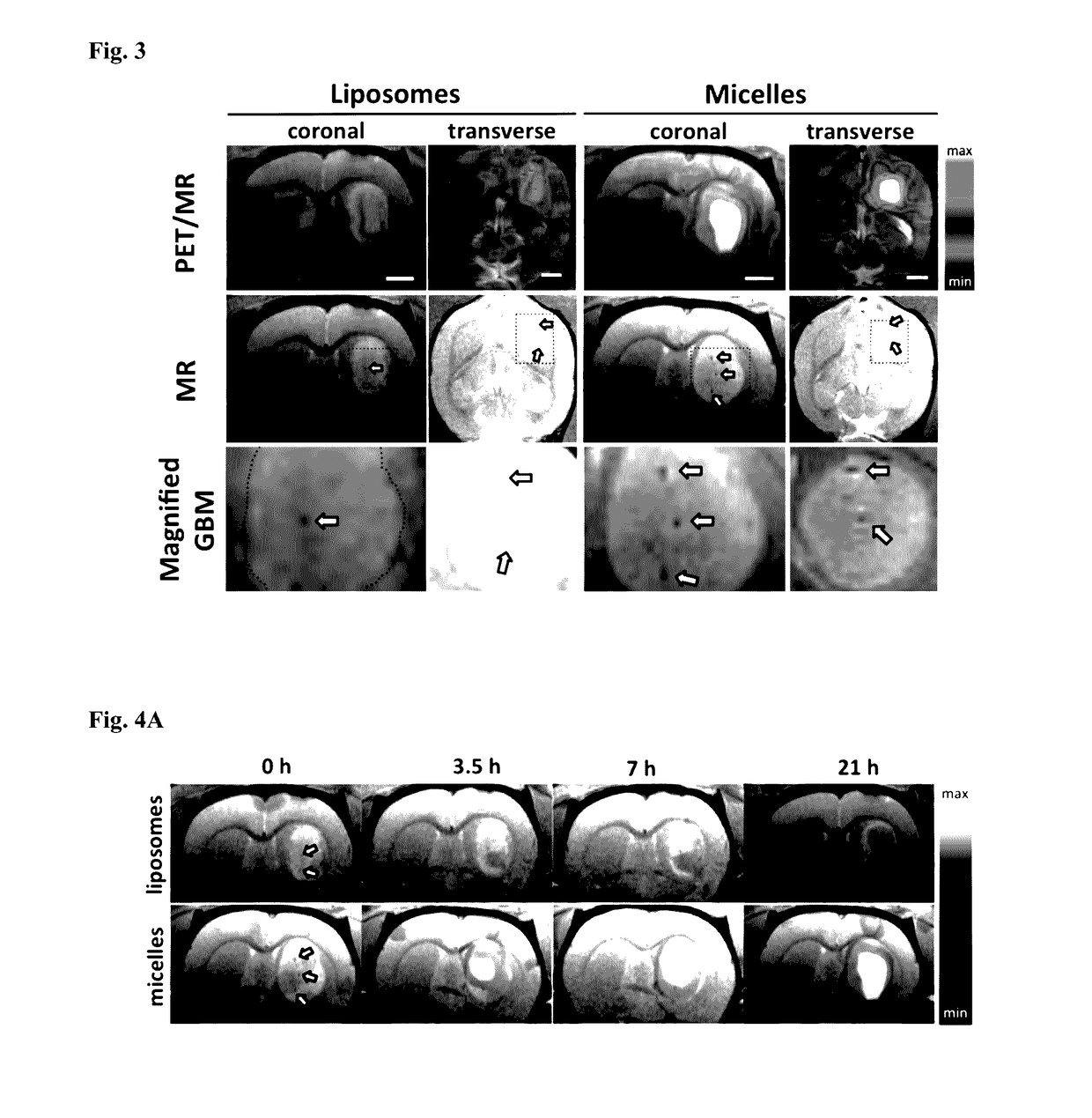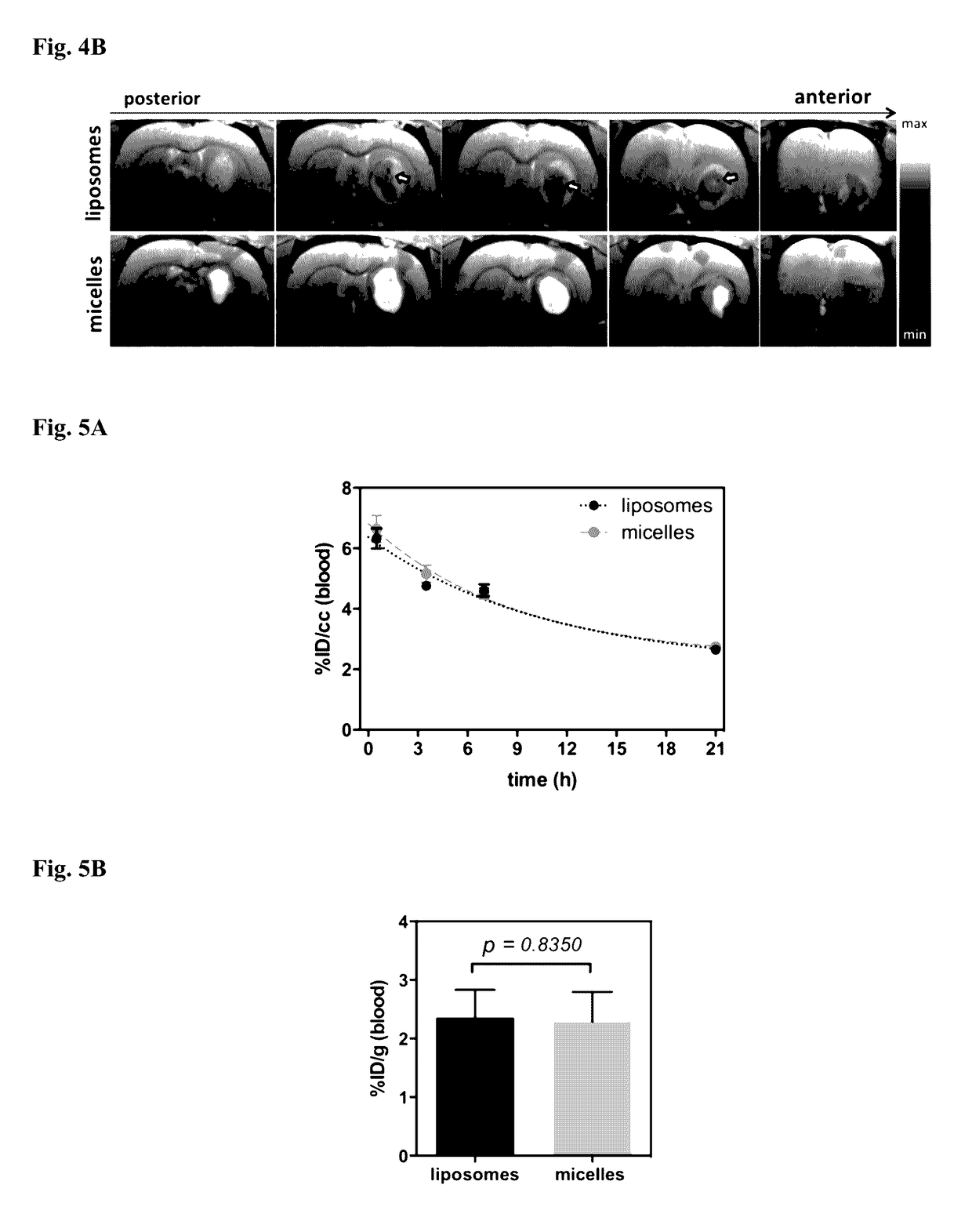Nanocarriers for cancer treatment
a cancer and nanoparticle technology, applied in the direction of pharmaceutical delivery mechanism, organic active ingredients, radioactive preparation forms, etc., can solve the problems of reduced permeability and unclear evidence of enhanced delivery to brain tumors with small nanoparticles, and achieve the effects of increasing cerebral blood volume, increasing average vessel size, and increasing epr
- Summary
- Abstract
- Description
- Claims
- Application Information
AI Technical Summary
Benefits of technology
Problems solved by technology
Method used
Image
Examples
example 2
Preparation of 64Cu-Liposomes and -Micelles
[0145]To facilitate post-labeling, a custom lipid-PEG-chelator conjugate is incorporated into the self-assembled liposomes and micelles. As illustrated in FIG. 1, liposomes with 0.5 mol % 6-BAT lipid and micelles with 2 mol % of dC18-1COI(P2k)-6-BAT were successfully prepared in 0.1 M ammonium citrate buffer (pH 5.5) and deionized water, respectively. The average mean diameter of the liposomes and micelles was 111.9±5.7 and 19.6±7.4 nm, respectively (Table 1). The Z-average particle size of the liposomes was about 6-fold greater than that of the micelles (FIG. 1). The zeta-potential of the liposomes and micelles was −15.6±3.5 and -13.6±1.4 mV under physiological pH, where the negative charge of micelles and liposomes results from PEG on the surface. 64Cu was efficiently incorporated into the 6-BAT chelator on both particles resulting in an 80±19% radiolabeling yield, which is comparable to the previous reports [39, 40]. The radiochemical pu...
PUM
| Property | Measurement | Unit |
|---|---|---|
| molecular weight | aaaaa | aaaaa |
| diameter | aaaaa | aaaaa |
| size | aaaaa | aaaaa |
Abstract
Description
Claims
Application Information
 Login to View More
Login to View More - R&D
- Intellectual Property
- Life Sciences
- Materials
- Tech Scout
- Unparalleled Data Quality
- Higher Quality Content
- 60% Fewer Hallucinations
Browse by: Latest US Patents, China's latest patents, Technical Efficacy Thesaurus, Application Domain, Technology Topic, Popular Technical Reports.
© 2025 PatSnap. All rights reserved.Legal|Privacy policy|Modern Slavery Act Transparency Statement|Sitemap|About US| Contact US: help@patsnap.com



